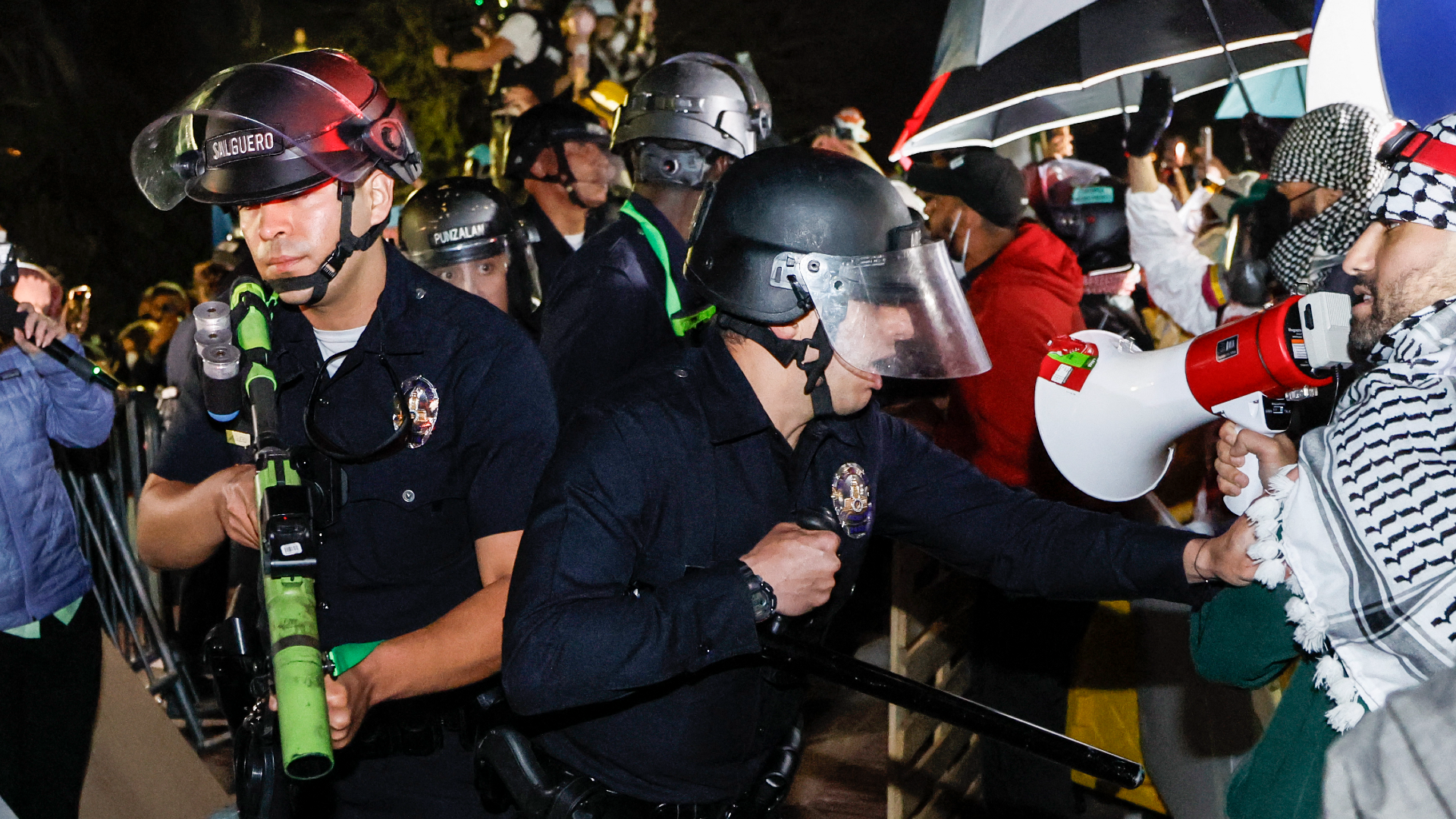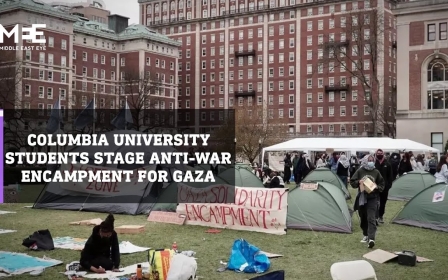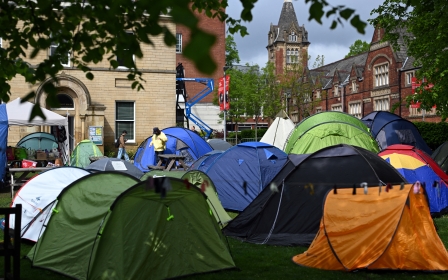US: Lieutenant criticises police report on clearing UCLA pro-Palestine encampment

A report released this week by California Highway Patrol, the agency responsible for clearing the University of California Los Angeles (UCLA) pro-Palestine encampment on 2 May, argues that 57 “less lethal” rounds fired at protesters were justified.
Former police lieutenant Jeff Wenninger, who specialises in investigating officers’ use of force, criticised the report for having no evidence to back up its justification.
The report said that officers encountered “assaultive resistance” from students who threw “frozen water bottles, bottles containing urine and other unknown fluids, full 12 oz soda cans, pieces of plywood, wooden poles, and various sized fire extinguishers (full and emptied)".
It also alleged that officers were “sprayed with fire extinguishers and other unknown chemical irritants, causing temporary blindness and difficulty breathing".
Wenninger, alongside a second law enforcement expert who reviewed video footage recorded by the newspaper, CalMatters, found that the protesters did not appear to attack or threaten officers.
New MEE newsletter: Jerusalem Dispatch
Sign up to get the latest insights and analysis on Israel-Palestine, alongside Turkey Unpacked and other MEE newsletters
Projectiles fired
Wenninger pointed out that an officer illegally fired a number of bean bag rounds in succession into a crowd.
An independent review of footage by The Los Angeles Times concurs that officers did fire into crowds and aimed at protesters’ heads.
The report said that “at no point were kinetic energy projectiles fired indiscriminately in the crowd of protesters".
It documents that 33 bean bag rounds were fired from 12-gauge shotguns and 24 sponge rounds were fired from 40mm grenade launchers.
Research published in a Harvard University health law centre article finds that these “less lethal” rounds are “inaccurate at long range, potentially deadly at very short range".
The one-page report was mandated by a law passed after the police severely wounded protesters with projectiles in the 2020 George Floyd protests.
The law stated that officers can only use projectiles to “defend against a threat to life or serious bodily injury” – the report cited verbatim this reasoning, which was disputed by Wenninger.
The rounds may never be “aimed at the head, neck, or any other vital organs”, according to the law – actions Wenninger also observed.
Officers must also make “repeated, audible announcements” of their plan to use projectiles. A police captain announced dispersal orders 29 times, the report said in its section for de-escalation.
Police response to encampments
Reporting by UCLA’s student newspaper the Daily Bruin detailed a chronology of the evening of 1 May to early morning of 2 May, when the police officers arrested hundreds of students and some professors in the pro-Palestine encampment.
Notably, students shouted “Where were you yesterday?” at the officers, referencing the violent attack on the encampment from the evening of 30 April to the early morning of 1 May that saw an insufficient police response.
That night, over a hundred counter-protesters and aggressors attacked the encampment with sprays, fireworks and sticks. Many members of the encampment were hospitalised.
The police had waited three hours before directing the attackers away.
Universities around the world have called law enforcement on student encampments.
Middle East Eye delivers independent and unrivalled coverage and analysis of the Middle East, North Africa and beyond. To learn more about republishing this content and the associated fees, please fill out this form. More about MEE can be found here.




